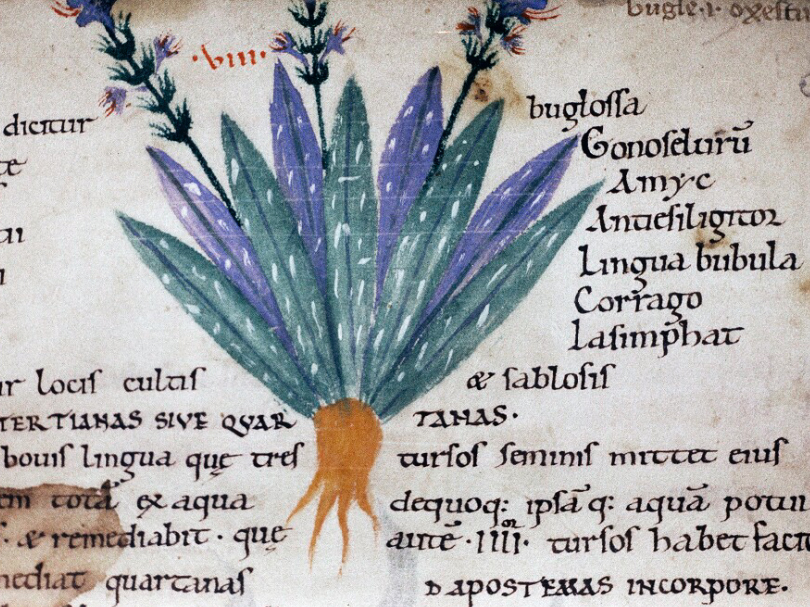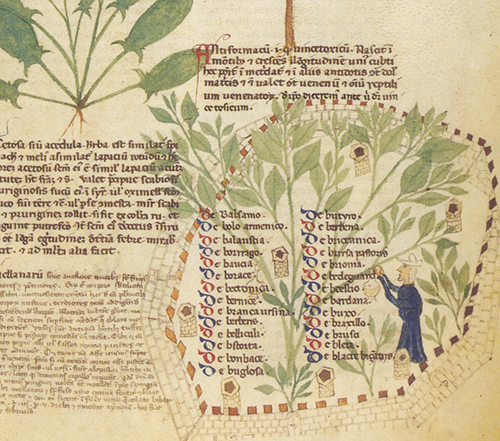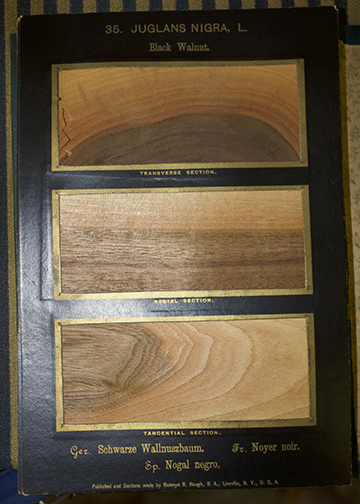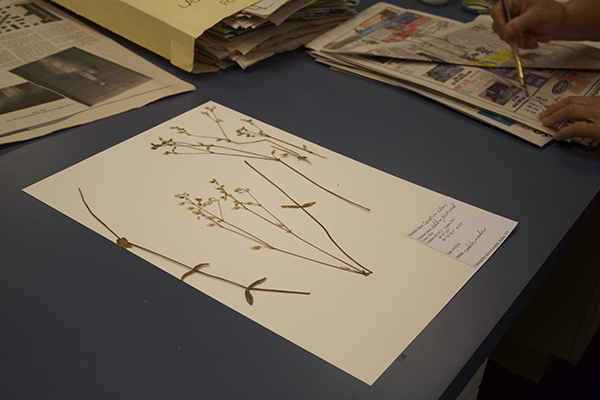Faculty Exhibit Award recipient details her experience in creating “Big Green Data”
Posted by Monte Maxwell.January 17th, 2020
By Lara Farina
English professor and recipient of the WVU Libraries’ 2019 Faculty Exhibit Award
Farina’s recent research focuses on the botanic world in pre-modern medicine, philosophy, art, and literature, specifically that of Late Antiquity and the Middle Ages. Her exhibit, “Big Green Data: Herbals, Science, and Art,” is currently on display at the Evansdale Library through May.
Archival research is always full of surprises, and sometimes these surprises are more worthy of study than the research we plan in advance. This was certainly true of my visits to British and American libraries for the purpose of looking at medieval herbals first-hand. Herbals are pharmacopeia, lists of medicinal plants. Before the sixteenth century, they circulated as manuscript codices — hand-written and often copiously illustrated books. I intended to read these works for information about how physicians and pharmacists used sensory practices to identify and discuss botanic life. But description of plants’ smell, feel, taste, and even visual appearance was disappointingly minimal in these voluminous works of botanic science.

What struck me instead was the names. All the names. Names in long lists and big blocks of text; names around and over illustrations; names in page headings, section headings, entry headings, and in page margins, re-written again and again by readers over the course of centuries.

The sheer abundance of those names generated a whole new research project for me, one that resulted in a scholarly article on how botanic “species” were perceived in premodernity and how writers grappled with the task of representing biodiversity.
Thanks to an “Art in the Library” grant for faculty, I also had an opportunity to try to communicate the surprise, the strangeness, and the interest of my encounter with the medieval materials. The posters of my library exhibit “Big Green Data: Herbals, Science, and Art” show viewers pages from herbal manuscripts and related medieval artifacts.
The images of the exhibit show the appeal of the material in ways I never could solely through writing. Collections of materials, whether pictures or objects, make their own arguments: the process of curating images for this exhibit let me play with making statements through an assembly of “things.”
This project for the Library also gave me a much-appreciated opportunity to work with other researchers and resources on campus, including at the Library itself. With the exhibit in mind, I asked Stewart Plein, our Rare Materials Librarian, if she would inform me about botanical materials held by the Library. Stewart produced an astonishing variety of early printed herbals, botanical studies, and illustrated surveys of flora. My favorite “book” proved to be the thirteen-volume The American Woods (pub. 1888), the pages of which consist of paper-thin shavings of wood samples. We were able to display a sample page, together with some other books from the Rare Materials Collection in a display case for the exhibit.

The exhibit also gave me an excuse to do something I had wanted to do for some time: visit the WVU Herbarium, and incredible collection of botanic samples under the direction of Donna Ford Wertz. My conversation with Donna informed me about current practices and debates in the scientific nomenclature for plants, and the Herbarium is a terrific example of how recording and archiving botanic diversity can be accomplished.

I thank the Library for its generous support of the Faculty Research grant, which allows researchers to try new ways of reaching an audience. I also owe thanks to Sally Deskins, too, for organizing the installation. I’m thrilled to say that the exhibit will show at other locations, possibly including the Morgantown Botanic Garden.
The Art in the Libraries committee seeks submissions for its 2020 Faculty/Staff Exhibits Award. Applicants must submit an outline of their proposal on the Propose an Exhibit online form by midnight Feb. 28. More information is available at exhibits.lib.wvu.edu.





